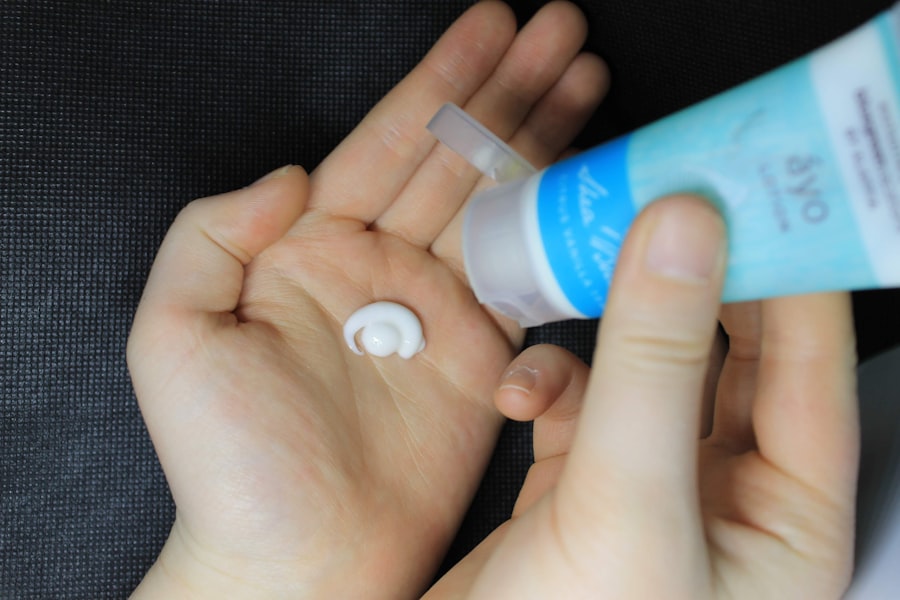When you undergo laser hair removal, you are investing in a long-term solution to unwanted hair. However, the journey doesn’t end once the laser treatment is complete. Post-laser hair removal shaving plays a crucial role in ensuring that your skin remains smooth and free from irritation.
You may find that shaving after your sessions helps to remove any remaining hair that the laser may not have fully eliminated. This can enhance the overall results of your treatment, allowing you to enjoy the benefits of smoother skin for longer periods. Moreover, understanding the importance of post-laser hair removal shaving can help you maintain the health of your skin.
After laser treatments, your skin may be sensitive and require special care. Shaving can help to exfoliate the skin gently, removing dead skin cells and promoting a fresh appearance. By incorporating shaving into your post-treatment routine, you can support your skin’s healing process while also ensuring that any regrowth is managed effectively.
This proactive approach can lead to a more satisfying outcome from your laser hair removal experience.
Key Takeaways
- Post-laser hair removal shaving is important for maintaining smooth and hair-free skin
- Preparing the skin before shaving is crucial to prevent irritation and ingrown hairs
- Choosing the right shaving products, such as gentle exfoliants and moisturizing creams, is essential for post-laser hair removal care
- Proper shaving techniques, including using a sharp razor and shaving in the direction of hair growth, can help prevent irritation and ingrown hairs
- It’s important to manage potential side effects of post-laser hair removal shaving, such as redness and irritation, with soothing and anti-inflammatory products
Preparing Your Skin for Post-Laser Hair Removal Shaving
Before you even think about reaching for a razor, it’s essential to prepare your skin adequately for post-laser hair removal shaving. Start by ensuring that your skin is clean and free from any products that could irritate it. A gentle cleanser can help remove any residual lotions or oils that may interfere with the shaving process.
You should also consider waiting a few days after your laser treatment before shaving, as this allows your skin to recover from any potential irritation caused by the procedure. Once your skin is clean, it’s time to hydrate it. Applying a soothing moisturizer can help to calm any redness or sensitivity that may have occurred during the laser treatment.
Look for products that contain calming ingredients like aloe vera or chamomile, as these can provide additional relief. Hydrated skin is not only more comfortable to shave but also less prone to nicks and cuts. Taking these preparatory steps will set you up for a smoother and more effective shaving experience.
Choosing the Right Shaving Products for Post-Laser Hair Removal
Selecting the right shaving products is vital for ensuring a comfortable and effective post-laser hair removal shaving experience. You should opt for a razor designed for sensitive skin, as these typically feature protective barriers that minimize irritation. A single-blade razor can be particularly beneficial, as it reduces the risk of pulling on the hair and causing discomfort.
Mayo Clinic If you prefer an electric razor, choose one specifically designed for sensitive areas to avoid unnecessary irritation. In addition to the razor, the shaving cream or gel you use is equally important. Look for products that are fragrance-free and formulated for sensitive skin.
Mayo Clinic These products often contain moisturizing ingredients that can help soothe your skin during the shaving process. Avoid using traditional foams or gels that may contain harsh chemicals or fragrances, as these can exacerbate any sensitivity you may be experiencing post-treatment. By carefully selecting your shaving products, you can create a more pleasant and effective shaving experience.
Proper Shaving Techniques for Post-Laser Hair Removal
| Technique | Description |
|---|---|
| Use a clean, sharp razor | Ensure the razor is free from bacteria and change the blade regularly to avoid irritation. |
| Shave in the direction of hair growth | Minimize irritation and ingrown hairs by shaving in the same direction as the hair grows. |
| Apply shaving gel or cream | Use a moisturizing shaving gel or cream to provide a smooth surface and reduce friction. |
| Rinse the razor frequently | Keep the razor clean by rinsing it often during shaving to prevent clogging and irritation. |
| Moisturize after shaving | Apply a gentle, alcohol-free moisturizer to soothe the skin and prevent dryness. |
Once you have prepared your skin and chosen the right products, it’s time to focus on proper shaving techniques for post-laser hair removal. Begin by applying a generous amount of shaving cream or gel to create a protective barrier between the razor and your skin. This will help reduce friction and minimize the risk of irritation.
When you start shaving, use gentle strokes in the direction of hair growth rather than against it. This technique helps prevent ingrown hairs and reduces the likelihood of irritation. It’s also essential to avoid pressing too hard on the razor; let it glide over your skin instead.
If you notice any areas where hair is not being removed easily, rinse the blade frequently to keep it clean and effective. After completing the shave, rinse your skin with cool water to remove any remaining product and soothe any potential irritation. Pat your skin dry with a soft towel rather than rubbing it, as this will help maintain its delicate condition.
Dealing with Potential Side Effects of Post-Laser Hair Removal Shaving
Even with careful preparation and technique, you may still encounter some side effects after post-laser hair removal shaving. Common issues include redness, irritation, or even small bumps on the skin’s surface. If you experience these symptoms, don’t panic; they are often temporary and can be managed effectively.
Applying a soothing lotion or gel containing aloe vera can help calm irritated skin and reduce redness. In some cases, you might also notice ingrown hairs after shaving. These occur when hair grows back into the skin instead of outward, leading to bumps and discomfort.
To prevent ingrown hairs, consider exfoliating your skin regularly with a gentle scrub or exfoliating glove. This will help remove dead skin cells and allow hair to grow freely without becoming trapped beneath the surface. If ingrown hairs do occur, avoid picking at them; instead, use a warm compress to soothe the area and encourage healing.
Maintaining Hygiene and Cleanliness After Post-Laser Hair Removal Shaving

Maintaining hygiene and cleanliness after post-laser hair removal shaving is crucial for preventing infections and ensuring optimal results from your treatment. After shaving, make sure to clean your razor thoroughly to remove any hair or product residue. This not only prolongs the life of your razor but also minimizes the risk of bacteria buildup that could lead to infections.
Additionally, consider taking a shower after shaving to cleanse your skin further and remove any remaining shaving cream or gel. Use a mild soap that won’t irritate your sensitive skin, and avoid hot water, as it can exacerbate redness and irritation. After showering, gently pat your skin dry and apply a soothing moisturizer to keep it hydrated and protected.
By prioritizing hygiene in your post-shaving routine, you can support your skin’s health and enhance the results of your laser hair removal treatment.
Managing Irritation and Redness After Post-Laser Hair Removal Shaving
Irritation and redness are common concerns following post-laser hair removal shaving, but there are several strategies you can employ to manage these symptoms effectively. First and foremost, applying a cold compress to the affected areas can provide immediate relief from discomfort and reduce inflammation. Simply soak a clean cloth in cold water, wring it out, and gently press it against your skin for several minutes.
In addition to cold compresses, consider using over-the-counter hydrocortisone cream if redness persists or becomes bothersome. This topical treatment can help reduce inflammation and soothe irritated skin. However, be cautious not to overuse it; follow the instructions on the packaging or consult with a healthcare professional if you have concerns about its application.
Long-Term Care and Maintenance for Post-Laser Hair Removal Shaving
Long-term care and maintenance are essential components of ensuring lasting results from your laser hair removal treatments and post-shaving routine. Regularly moisturizing your skin is key; keeping it hydrated helps maintain its elasticity and overall health. Look for moisturizers that contain nourishing ingredients like hyaluronic acid or shea butter, which can provide deep hydration without clogging pores.
Additionally, consider incorporating sun protection into your daily routine if you haven’t already done so. Your skin may be more sensitive after laser treatments, making it crucial to protect it from harmful UV rays. Use a broad-spectrum sunscreen with an SPF of at least 30 whenever you plan to be outdoors, even on cloudy days.
By prioritizing long-term care through hydration and sun protection, you can enjoy smooth, healthy skin long after your laser hair removal sessions are complete. In conclusion, understanding the importance of post-laser hair removal shaving is vital for achieving optimal results from your treatments while maintaining healthy skin. By preparing your skin properly, choosing suitable products, employing effective techniques, managing potential side effects, maintaining hygiene, addressing irritation, and committing to long-term care, you can ensure that your experience with laser hair removal remains positive and rewarding.
Embrace this journey with confidence, knowing that each step contributes to achieving the smooth skin you desire.
After undergoing laser hair removal, proper aftercare is essential to ensure the best results. One important aspect of aftercare is shaving the treated area. It is recommended to wait a few days after the treatment before shaving to allow the skin to heal properly. A related article on laser hair removal aftercare shaving can be found here. This article provides helpful tips and guidelines on how to shave the treated area safely and effectively to maintain the results of the laser hair removal treatment.
FAQs
What is laser hair removal aftercare shaving?
Laser hair removal aftercare shaving refers to the process of shaving the treated area after a laser hair removal session to maintain the results and ensure proper healing.
Why is shaving important after laser hair removal?
Shaving after laser hair removal helps to remove any remaining hair in the treated area, allowing the laser to target the hair follicles more effectively during subsequent sessions. It also helps to prevent ingrown hairs and maintain smooth skin.
When should I start shaving after laser hair removal?
It is recommended to wait at least 24-48 hours after a laser hair removal session before shaving the treated area. This allows the skin to recover from the treatment and reduces the risk of irritation.
How should I shave after laser hair removal?
When shaving after laser hair removal, use a clean, sharp razor and shave in the direction of hair growth to minimize irritation. Avoid using dull razors or shaving too aggressively, as this can cause irritation and ingrown hairs.
Are there any specific products I should use when shaving after laser hair removal?
It is recommended to use a gentle shaving cream or gel to lubricate the skin and minimize irritation. Avoid using products with harsh chemicals or fragrances, as these can irritate the skin after laser hair removal.
Are there any precautions I should take when shaving after laser hair removal?
After laser hair removal, it is important to avoid sun exposure and exfoliating the treated area for a few days. Additionally, be gentle when shaving to avoid irritating the skin and causing ingrown hairs.







